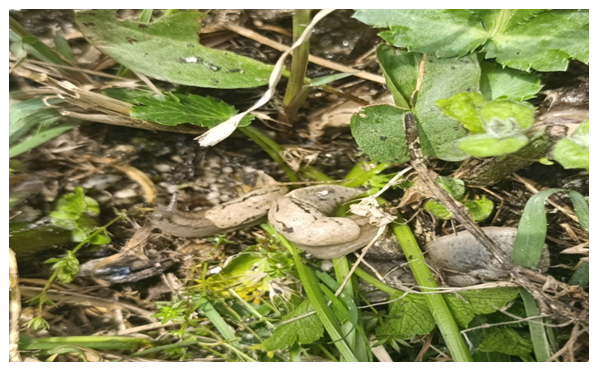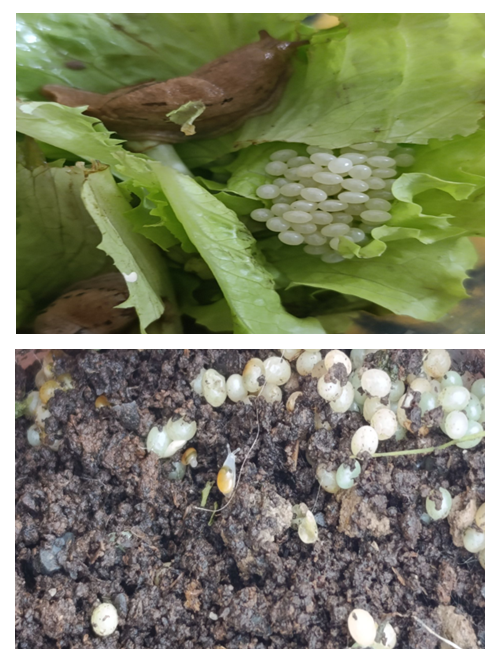-
Paper Information
- Next Paper
- Previous Paper
- Paper Submission
-
Journal Information
- About This Journal
- Editorial Board
- Current Issue
- Archive
- Author Guidelines
- Contact Us
International Journal of Genetic Engineering
p-ISSN: 2167-7239 e-ISSN: 2167-7220
2025; 13(6): 104-105
doi:10.5923/j.ijge.20251306.03
Received: May 11, 2025; Accepted: May 27, 2025; Published: Jun. 5, 2025

Biology and Ecology of Candaharia levanderi (Simroth, 1901)
Orziyeva Y. M.1, Davronov B. O.2
1Gulistan State University, Gulistan, Uzbekistan
2Karshi State University, Karshi, Uzbekistan
Copyright © 2025 The Author(s). Published by Scientific & Academic Publishing.
This work is licensed under the Creative Commons Attribution International License (CC BY).
http://creativecommons.org/licenses/by/4.0/

This article covers the morphology, biology, and ecology of the species Candaharia levanderi (Simroth, 1901), which is distributed in the southern flank of the Zarafshan mountain range. This species belongs to the family Parmacellidae and is found in the districts of Kitab (Rus, Sevaz, Koyni, Hazrati Bashir) and Chirakchi (Garovli, Langar, Taragay) in the Zarafshan mountain range of Uzbekistan. It is a common Middle Asian species in Uzbekistan. Candaharia levanderi has a one-year life cycle. It wakes up from hibernation at the beginning of spring, intensively feeds in April, and begins to breed. After laying eggs, the slug in the imago state dies. The life cycle consists of four stages: childhood (infantile), underage, matured (adult), and old age. It damages cultural and ornamental plants during the spring period. It also poses a threat to livestock as an intermediate host of parasitic nematodes.
Keywords: Candaharia levanderi, Morphology, Biology, Ecology, Life cycle
Cite this paper: Orziyeva Y. M., Davronov B. O., Biology and Ecology of Candaharia levanderi (Simroth, 1901), International Journal of Genetic Engineering, Vol. 13 No. 6, 2025, pp. 104-105. doi: 10.5923/j.ijge.20251306.03.
1. Introduction
- In Uzbekistan conditions, Candaharia levanderi is a common species. The color is gray or gray-yellow, and the mantle part is colored slightly darker than the back and sides. Dimensions: body length from 70 to 100 mm when crawling, from 40 to 60 mm when shrinking [3].
 | Figure 1. Candaharia levanderi |
2. Materials and Methods
- Research materials were collected in 2024-2025 from the hill and mountain regions of the Kitab (Russian, Sevaz, Koyni, Hazrati Bashir) and Chirakchi (Garovli, Langar, Taragay) districts located on the southern slope of the Zarafshan mountain range. The slugs were picked early in the morning, during their most active and high humidity. Initially, they were placed in clean water; after 20-30 minutes, they were transferred to 80% alcohol, and after 1-2 weeks, they were fixed to 75% alcohol [4,5]. Anatomical analysis was carried out based on paraffin incisions and the method of Likharev and Victor [1]. Some of the material was preserved and observed in terrariums under laboratory conditions.
3. Results and Their Analysis
- Candaharia levanderi (Simroth, 1901) –adapted to almost all biotopes of mountain and hill regions. It begins to be active in early spring, sometimes as early as the end of February. It feeds until April and then begins breeding. Egg laying is observed in the first and second decades of April. The breeding season lasts until the end of May. Females can lay eggs up to 5 times. Each female lays 15 to 35 whitish, 0.5 mm long eggs on the ground or under the thorax. Young slugs hatch from the egg in 20-25 days. They hide among the soil in a state of summer diapause, actively develop in autumn, and go to winter in a sexually immature state (20-25 mm) in order to study the reproduction of C. levanderi even under laboratory conditions, before and after the sexually merger slugs were placed in glass terrariums under natural conditions. At the bottom of the pot, moist soil was laid 8–10 cm thick, and its moisture was kept in the same way as by spraying water. Plants were also abandoned at the bottom of the pot to feed on the slugs. The temperature of the room where the slugs were stored was maintained at an average of 18-20°C. The slugs under the experiment laid 15 to 35 eggs between the soil. The eggs are whitish and 0.5 mm long. The period of development of eggs is 19-22 days in laboratory conditions. The release of slugs from eggs lasted 2-3 days.
 | Figure 2. Candaharia levanderi in laboratory conditions |
4. Conclusions
- The research carried out made it possible to determine the biology, breeding cycle, and ecological status of the species Candaharia levanderi. The role of this species in nature and agrobiocenosis, especially its adverse effects on plants and livestock during the spring period, serves as a scientific basis for the development of measures to combat it. In Uzbekistan, molluscs in the family Parmacellidae, especially species such as C. levanderi, have not yet been sufficiently studied, and research in this direction should be continued.
 Abstract
Abstract Reference
Reference Full-Text PDF
Full-Text PDF Full-text HTML
Full-text HTML